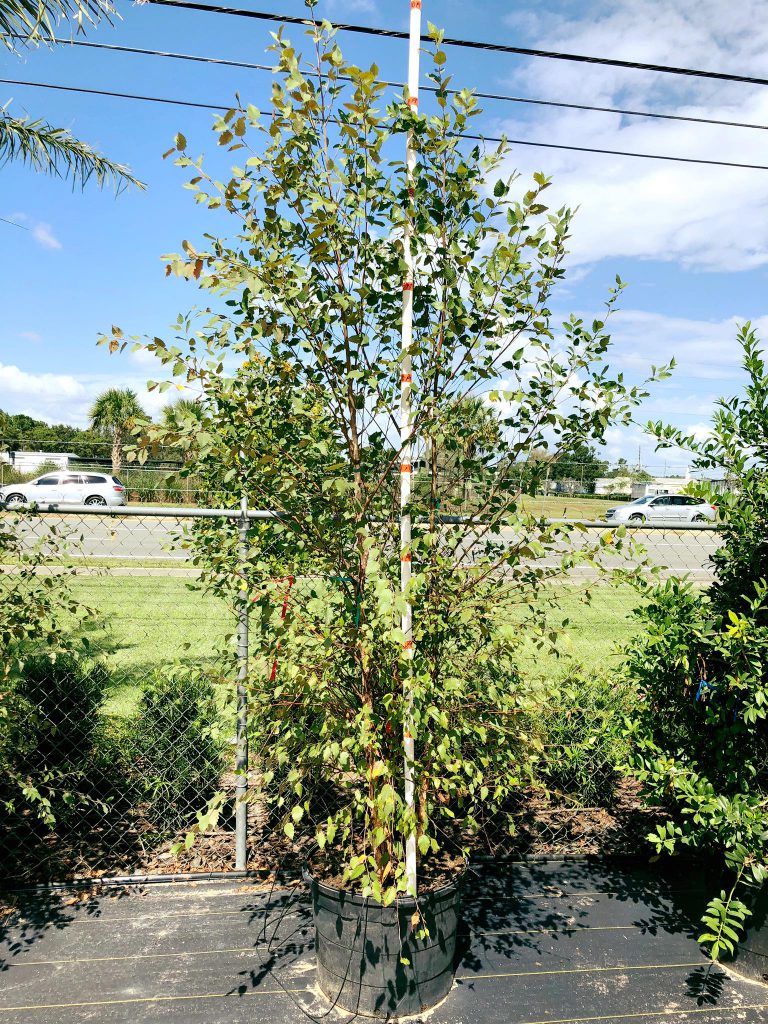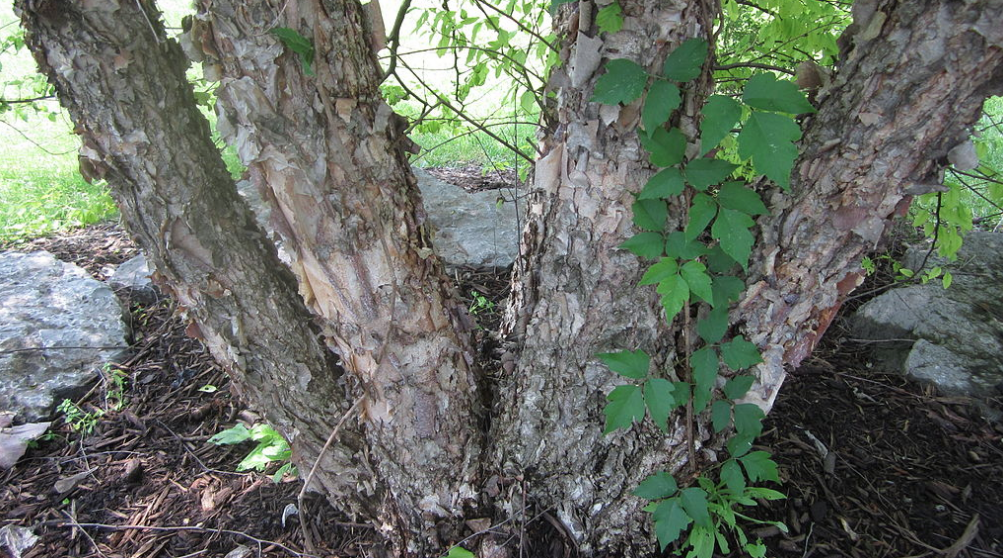Special of the Week – River Birch Dura Heat
????Special of the Week????

Save $30 on Riverbirch Dura – Heat
Height : 9-10 FT
Width : 4-5 FT
Now Only $135!
p.s. this is a fast growing tree
Betula nigra(black birch, river birch, water birch) is a deciduous tree growing to 25–30 meters (80–100 ft) with a trunk 50 to 150 centimeters (20 to 60 in) in diameter. The base of the tree is often divided into multiple slender trunks.[1][2]
Bark
Bark characteristics of the river birch differ during its youth stage, maturation, and old growth. The bark of a young river birch can vary from having a salmon-pink to brown-gray tint and can be described as having loose layers of curling, paper thin scales. As the tree matures, the salmon-pink color is exchanged for a reddish-brown with a dark grey base color. The scales on a mature tree lack the loose curling and are closely pressed into thick, irregular plates. These scales are slightly separated from the trunk and can shift outward to the side. Once the River Birch ages past maturity, the scales become thicker towards the base of the trunk and are divided in deep furrows.[2]

Leaves and Fruit
The twigs are glabrous or thinly hairy.There is an absence of terminal buds, and lateral buds often have a hook at the tip of the bud, which differs from other species in the family Betulaceae.[3] The leaves are alternate, ovate, 4–8 centimeters (1 1⁄2–3 1⁄4 in) long and 3–6 centimeters (1 1⁄4–2 1⁄4 in) broad, with a serrated margin and five to twelve pairs of veins. The upper surface of the leaf is dark green in color, while the underside can be described as having a light yellow-green color.[4] The flowers are wind-pollinated catkins 3–6 centimeters (1 1⁄4–2 1⁄4 in) long, the male catkins pendulous, the female catkins erect. The fruit is unusual among birches in maturing in late spring; it is composed of numerous tiny winged seeds packed between the catkin bracts.[1][5]
Habitat and Range
The river birch is often found in low-elevation regions from as north as Massachusetts to as south as northern Florida. It can be found extending west to Kansas and east to the coast where proper habitat conditions occur. As its name depicts, this birch is found along stream-sides. It can also be a prominent species found in forested wetland communities and in areas containing moist soil, such as floodplains.
Cultivation and uses
While its native habitat is wet ground, it will grow on higher land, and its bark is quite distinctive, making it a favored ornamental tree for landscape use. A number of cultivars with much whiter bark than the normal wild type have been selected for garden planting, including ‘Heritage’ and ‘Dura Heat’; these are notable as the only white-barked birches resistant to the bronze birch borer Agrilus anxius in warm areas of the southeastern United States of America.[10]
Native Americans used the boiled sap as a sweetener similar to maple syrup, and the inner bark as a survival food.[10] The river birch is not typically used in the commercial lumber industry, due to knotting, but its strong, closely grained wood is sometimes used for local furniture, woodenware, and fuel.[4][8] This species is utilized by many local bird species, such as waterfowl, ruffed grouse, and wild turkey. Many waterfowl use the cover for nesting sites, while the ruffed grouse and wild turkey use the seeds as a food source.[8] Deer have been known to graze on saplings or reachable branches.[3]
Stop by our landscape yard and get a great deal on a great tree today.
Groveland, Florida 34736

